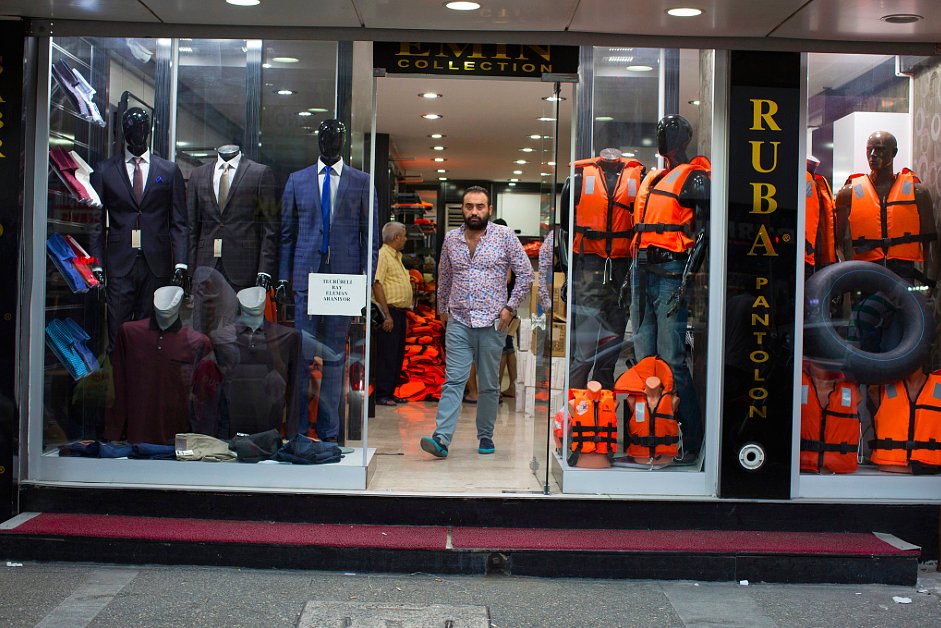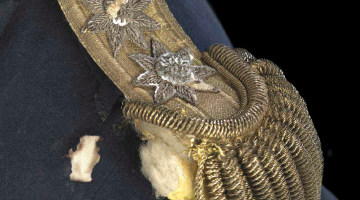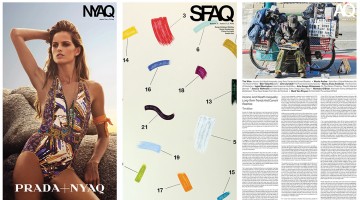The fashion designer Yves Saint Laurent famously quipped that “fashions fade, style is eternal.” This enigmatic statement does much to elucidate the powerful place that style holds in many contemporary cultures. In particular, it alerts us to the relationship that exists between notions of style and notions of history. Or, to the idea that “to have style” is to have the means of inserting oneself into history, while “to lack style” is to risk oblivion. This column, “Style Wars,” suggests that the tracing of style’s fluctuating movements across varied social, political, aesthetic, and philosophical terrains is important work, and that this is particularly true within the realms of fine art, design, art history, and visual studies (as many important figures within these fields have long vied to claim and contest the ownership of this term). “Style Wars” aims to appreciate how thinking about style can offer opportunities to explore sets of subjectivities and cultural practices that are often disassociated or pitted against one another.
***
Life Jackets
On September 26, 2015, a photograph appeared in the online edition of The New York Times that lays bare the obscene circumstances that separate modern life and death. It encapsulates the complicated ways that we fashion, or style, our relative purchases on the future. Taken by Pulitzer Prize winning, senior staff photographer Tyler Hicks, the image shows a man emerging from a small, well-lit retail outlet located on Fevzi Pasa Boulevard in Izmir, Turkey. To his right, a storefront window displays men’s business suits and sport shirts in limited and conventional palettes. To the man’s left, a crowd of mannequins exhibit a range of bright, safety-orange colored life jackets that are visually merchandised against fully inflated inner tubes. Throughout the store’s interior, deep stacks of life jackets appear to spill across the polished floor.
What is perhaps most staggering about this photograph is that the conditions of its possibility are as overwhelming as they are ordinary. It is a stark index of “the multimillion-dollar shadow economy that has developed in Turkey to profit from the massive human tide rushing toward Europe,”1 and it documents one of the last “stopping-off” places for thousands of people seeking refuge from the violences that plague their homelands located in Iraq, Syria, Eritrea, and beyond. The absolutely radiant orange vests featured in the foreground work to signal and materialize a necessary form of hope for those who are facing turbulent seas ahead (waters that have already consumed thousands of lives just this year). This alone does not account for the image’s power. The standard business apparel teases out the prospect of upward mobility and suggests a sense of security that lies just beyond the refugees’ current peripheries. Juxtaposed alongside one another, these garments create a hypothetical before-and-after image, steeped in wishful thinking, hopes and dreams, and bitter necessities.
Hick’s photograph serves as a perceptive, formal critique of how narrow the gulf can be between those who “have” and those who “have-not.” Similar to Eugène Atget’s early 20th-century images of fashionable storefronts positioned along Paris’s Avenue des Gobelins, it powerfully confronts viewers with the ways in which a simple retail window can momentarily capture the complex constructions of modern life and identity, while simultaneously amplifying the spellbinding powers that starkly commodified forms of dress have, namely the power to make promises of newer and better futures.
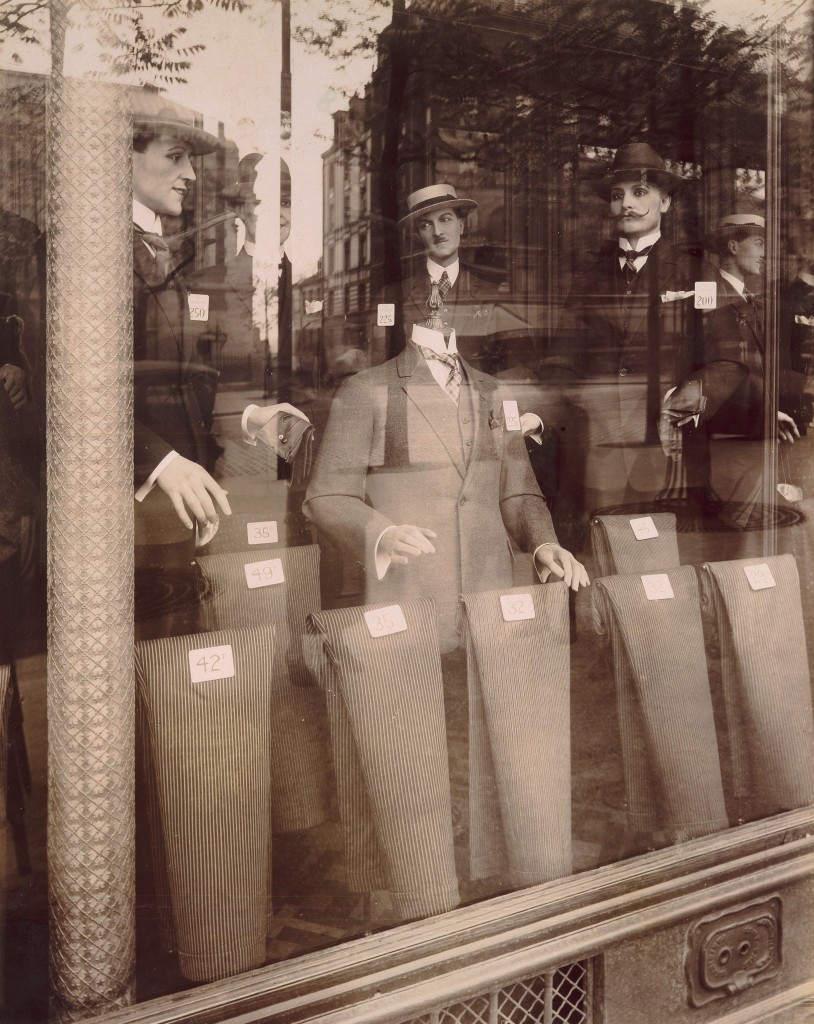
Eugène Atget, Avenue des Gobelins, 1927. Albumen silver print from glass negative, 8 5/8 x 6 13/16 inches. Courtesy of the Internet.
On the eve of a new year, and in the ongoing wake of a human rights crisis of unfathomable proportions, Hicks’s image commands our attention. It insists that we take seriously the material provocations that draw so many of us out into dangerous waters. And it asks: why are we so often compelled to put our trust and hopes in material objects and commercial transactions despite the sinking feeling that our chances for success are precarious at best?
There is a tendency to think that clothing is primarily meant to protect us, to defend our profoundly vulnerable and exposed bodies from the elements as much as from the penetrating gaze of one another. Clothes are deeply entangled with the belief that “our bodies” suffer from the peculiar capacity to be naked, and that our clothing marks our inimitable attempts at compensating for this shortcoming by extending our bodies into the future (and outside the realms of some naïve, perpetually present animality).
Clothes are wound around our bodies from the moment of our birth. Fabrics are cut, folded, and sewn into neat, clever maps, authorizing our access and granting us safe passage. Heads peep through collars, fingers and feet through varying cuffs or hems, and we are instantly located. Our locomotion is fixed within a variable, but limited set of parameters, plotted along a variety of political and psychological vectors: pink is for girls, blue is for boys; no shirt, no shoes, no service; only uniformed personnel allowed beyond this point; black tie required; the concealment of one’s head or face is prohibited; “but I’m just not dressed for it . . .”
Many of the people residing in the region of the Aegean Sea have had difficulty keeping up with the new “raft economy’s” demands for objects like the life jacket. Some have resorted to making the highly sought-after garments without proper materials—producing them from fabrics and foams that actually absorb water, causing wearers to sink with rapidity. Yet there is no halt to these objects’ sales.2 The hope of what they guarantee magically endures. The risk is taken; the vest is ritualistically slipped over one’s head with the conviction that this garment will earn the right to be discarded onto the growing piles of jackets, inner tubes, and rafts dotting the beaches of Greece and Italy.
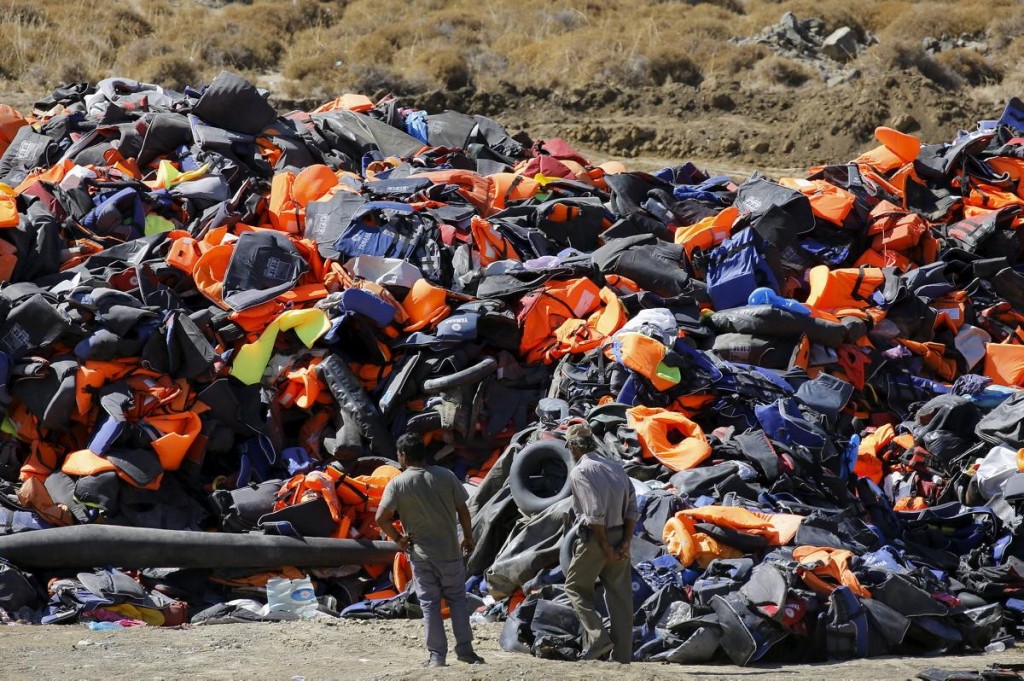
Locals survey a huge pile of deflated dinghies, tubes and life vests left by arriving refugees and migrants on the Greek island of Lesbos on Sept. 18, 2015. Photograph by Yannis Behrakis/Reuters.
Here, we might appreciate how our clothes organize our bodies and feelings towards the world, and towards one another. Without them we are left at a loss, disoriented, set adrift. This is particularly true in the case of the life vests pictured in Hicks’s photograph. Despite the high probability of defect, these vests still maintain the idea that they can help usher one through drastically chaotic and dangerous times and spaces. These vests remove inhibitions. Perhaps, without them, one cannot imagine escaping the twisted circumstances of the here and now. To expand upon this point, these vests attest to the fact that much of what we buy carries defect or is dangerous (even transparently so), but that these smooth transactions and shiny, new material objects comfort us nonetheless.
In a political economy that trades in futures and gambles on state and market instability, the relative levels of comfort that we experience are measures of our privilege. The degree to which we are in peril marks the limits of our privilege. Real, sustainable comforts mark our degrees of privilege, as do the disposable illusions of comfort that we find in shop windows. But it behooves us to remember that we are all vulnerable to exposure, and how we style our senses of comfort in the face of uncertainty matters gravely. We have grown too comfortable with the discomfort of others. We have abdicated our long-term responsibilities to one another (and to ourselves) in return for disposable, material consolations.
If this new year is to bring something other than an increased number of bodies literally sinking to the bottom, we must resolve to find new ways of fashioning more sustainable means of keeping ourselves afloat. In the face of uncertainty, we must understand that comfort always comes at a cost, and that some of us will need to feel more exposed, so that others may be covered; some of us will sacrifice coverage, so that others may find shelter. Eventually, we must challenge ourselves to develop a material logic, and a sense of comfort, that isn’t founded on nakedness—or the fear of not being (human).
1) Hubbard, Ben. “Money Flows With Refugees, and Life Jackets Fill the Shops”, The New York Times. 26 September 2015.
2) As The New York Times reports, “An employee [at the store depicted in Hicks’s photograph] who would not give his name said he sold 80 vests a day, for $13 each” (ibid). Maven Rana, the author of another, related report published with the BBC shortly before the NYTimes article (on August 28, 2015) and entitled “Europe migrants’ life-jacket capital,” states that other retailers report selling between 100-150 life jackets a day. Please note that I do not mean to suggest that the life vests depicted in Hicks’s photograph are necessarily made from inappropriate or defective materials; this isn’t something I can corroborate. Rather, what I am suggesting is that these (and other) vests are being purchased at unfaltering rates despite increasingly volatile market and cultural conditions, which unequivocally indicate a high likelihood that any such vest could be faulty.
